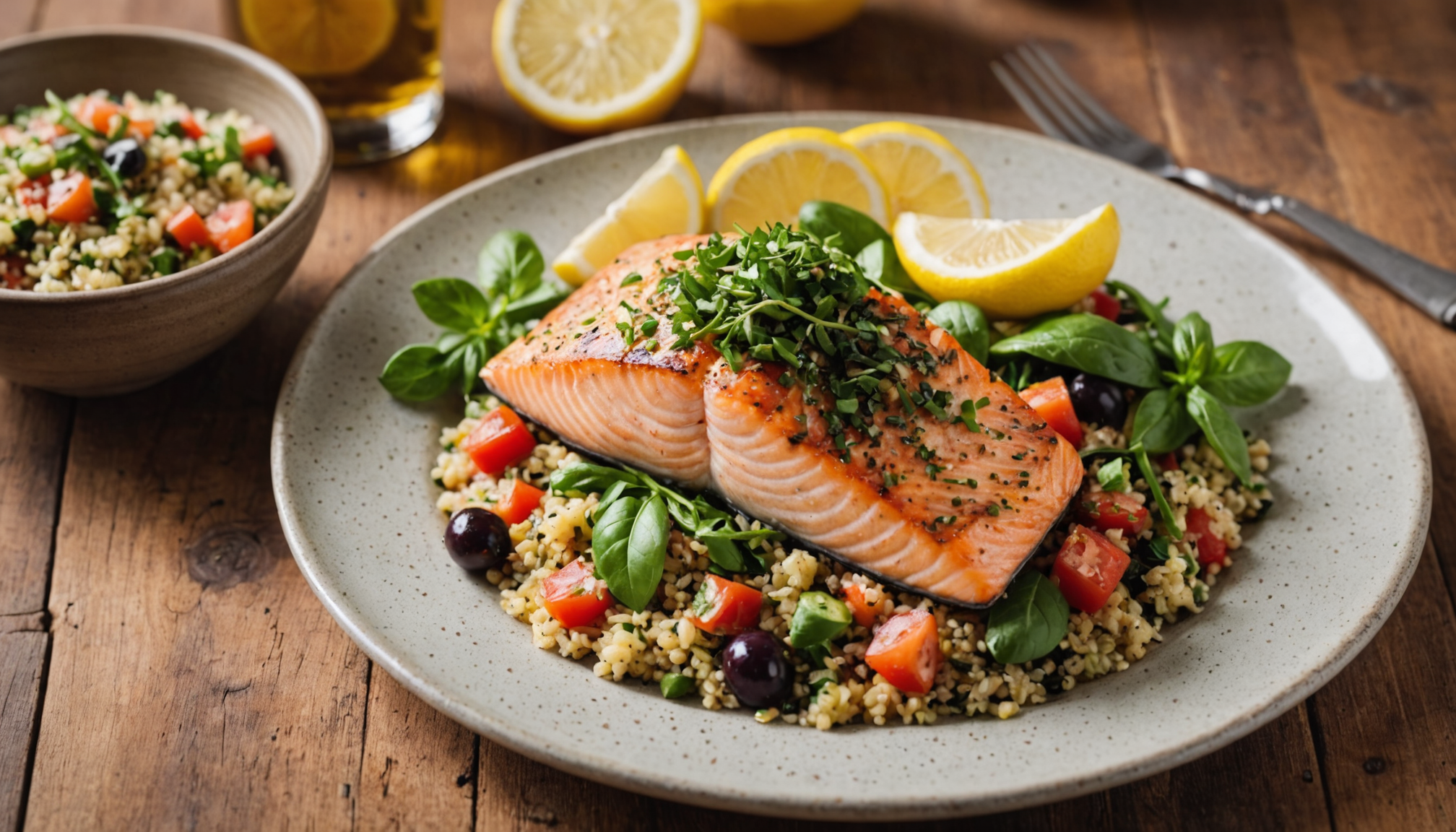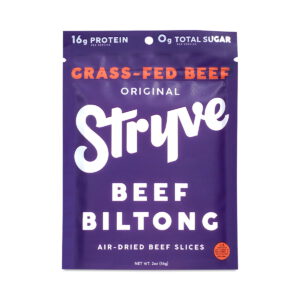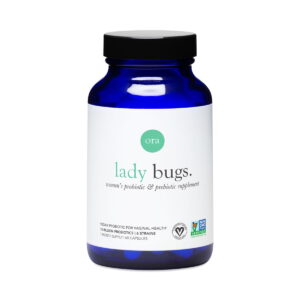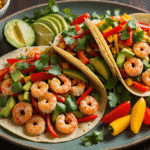- Health benefits of organic seafood
- Sourcing high-quality ingredients
- Quick and easy seafood recipes
- Delicious seafood salads
- Flavorful seafood mains
- Creative seafood side dishes
When embarking on your grocery shopping journey, it’s essential to know how to source the best ingredients that not only enhance your healthy meals but are also safe and budget-friendly. Whether you’re shopping online or in-store, being informed can help you make intelligent choices.
First and foremost, prioritize organic seafood options. Look for certifications from organizations like the Marine Stewardship Council (MSC) to ensure you’re purchasing sustainably sourced fish. When possible, opt for local seafood markets that tend to offer fresher and often more affordable options. Freshness is key in making those delightful seafood dinners that everyone will love!
For those interested in maintaining a vegan lifestyle or incorporating more plant-based foods into their diets, consider switching to sea vegetables such as nori or dulse, rich in nutrients and flavors that can complement your meal. They are an excellent source of iodine and can be used in various organic recipes.
When shopping, it’s beneficial to create a list of essential ingredients for your pantry. Here’s a handy list of items that suit a variety of dietary preferences:
- Healthy Fats: Extra virgin olive oil, avocado oil, and coconut oil
- Proteins: Organic legumes like lentils and chickpeas, tofu, or tempeh
- Grains: Whole grains such as quinoa, brown rice, and whole wheat pasta
- Seasonings: Fresh herbs like cilantro, parsley, and spices to enhance flavors
Keep in mind the importance of food safety, especially with seafood. Always check for clear labeling on products and avoid seafood that looks or smells off. Additionally, when shopping online, make sure to order from reputable sources that offer clear tracking and have good health policies to ensure the freshness of your ingredients. Reading reviews can help guide your selections.
Budget-wise, consider buying in bulk for items that have a long shelf life, such as grains and canned legumes. Store seasonal vegetables and seafood products, as they’re often more affordable and flavorful. Also, participate in local farmers’ markets to foster community relationships and discover new healthful options that support the local economy.
Lastly, enlist a friend or family member to shop with you. Not only can they help you with your list, but it’s also a great way to share ideas and inspire one another to try new organic recipes. Happy shopping!
Sourcing high-quality ingredients
When sourcing high-quality ingredients for your seafood dinners, paying close attention to the origin and handling of the seafood is crucial. This not only impacts flavor and freshness but also influences the nutritional value of the meals you prepare. To ensure that you are choosing the best possible options, familiarize yourself with the types of seafood available and the best practices for purchasing them.
Local seafood markets often provide an opportunity to purchase fresh, sustainably sourced seafood. Speaking directly to fishmongers can offer insights into which products are the freshest and which items are currently in season. When purchasing at larger grocery stores, look for specific labels that indicate the seafood has been sustainably caught or farmed. Labels like “wild-caught,” “sustainably farmed,” and “responsibly sourced” can be helpful guides when navigating the seafood section.
Here’s a comparison of different seafood types, along with their benefits:
| Seafood Type | Source | Nutritional Benefits | Ideal Recipes |
|---|---|---|---|
| Salmon | Wild-caught | High in Omega-3 fatty acids, Vitamin D | Grilled salmon steaks, salmon salad |
| Sardines | Canned or fresh | Rich in calcium, Vitamin B12 | Sardine pasta, grilled sardine sandwiches |
| Shrimp | Wild-caught or farmed | Lean protein, low calories | Garlic shrimp stir-fry, shrimp tacos |
| Tilapia | Farmed | High protein, versatile | Tilapia tacos, baked tilapia with herbs |
In addition to seafood, complementing these proteins with high-quality organic produce can elevate your meals. Opt for organic vegetables and herbs that are free from pesticides and fertilizers, enhancing both the flavor and the health benefits of your dishes. Items such as kale, spinach, and seasonal veggies can easily contribute to vibrant salads and sides, making them perfect companions for your seafood mains.
It is also beneficial to consider the storage and freshness of seafood products you purchase. If buying fresh seafood, plan to consume it within a couple of days. Otherwise, freeze it to preserve its quality. Vacuum-sealed options often last longer and maintain greater flavors compared to non-sealed counterparts. For those utilizing online grocery services, ensure that the seafood is shipped in insulated packaging, accompanied by ice packs to maintain the right temperature until it reaches your door.
Understanding the seafood supply chain can foster better sourcing decisions. Engaging with local suppliers, participating in community-supported fisheries (CSFs), and prioritizing seasonal catches not only supports sustainable practices but also provides a sense of connection to the food you serve at your table. By making educated choices and being mindful of your purchases, you can enhance the quality of your meals while promoting environmental sustainability.
Quick and easy seafood recipes

When you’re in the market for quick and easy seafood recipes, having the right ingredients on hand is key to whipping up delicious meals without breaking a sweat. Start by simplifying your grocery shopping with a focus on versatile seafood options that can be prepared in no time. This not only saves you effort but also keeps your family excited about healthy meals.
Begin with easy-to-cook seafood such as shrimp, salmon, or canned fish like tuna and sardines. These ingredients can be ready in a flash, making them perfect for weeknight dinners. When shopping for shrimp, look for raw, peeled, and deveined options that significantly cut down on preparation time. For salmon, prioritize fillets that are pre-portioned to help with cooking consistency and ease of serving.
Here are some quick picks to enhance your shopping basket:
- Shrimp: Perfect for stir-fries, salads, or tacos.
- Salmon fillets: Great for baking or grilling with minimal seasonings.
- Canned tuna or sardines: Ideal for sandwiches, salads, or pasta dishes.
- Frozen fish: A convenient and budget-friendly option that retains freshness.
Don’t forget to visit the produce aisle to load up on fresh veggies that can quickly accompany your seafood. Items like bell peppers, spinach, and avocados can add color and nutrients to your plate without requiring extensive prep work. Stocking these ingredients will allow you to mix and match for various “seafood dinners” that cater to your family’s taste preferences.
Additionally, if you’re following a busy schedule, consider investing in some pantry staples that lend themselves well to quick meals. Stock up on items such as whole grain pasta, quinoa, or brown rice. These grains pair seamlessly with your seafood choices and provide added fiber and nutrients. Plus, having a variety of canned goods like beans or legumes can help bulk up meals without adding much time to meal prep.
For those venturing into vegan-friendly territory, there are numerous plant-based options that mirror the texture and flavor of seafood. Seaweed snacks or plant-based alternatives mimic seafood, providing unique flavors and nutrition. You might also stock up on vegan marinades or sauces to elevate your plant-based meals.
As you shop, be discerning about quality and safety. Always check expiration dates and packaging integrity, especially when dealing with seafood. If you’re shopping online, ensure the retailer has a clear policy on food safety and offers insulated shipping options with ice packs to keep your items chilled during transit.
Finally, shopping seasonally can be a true game-changer. It’s often more budget-friendly while also ensuring you have the freshest ingredients at your disposal. Pay attention to local markets that showcase seasonal seafood and produce; these will provide the best flavors and support your local economy.
By following these easy grocery shopping tips, you can set yourself up for success in creating quick and easy seafood recipes that everyone will love. With a little preparation and creativity, you can serve up meals that are not only delicious but also healthful and exciting!
Delicious seafood salads

Seafood salads are a celebration of freshness and flavor, allowing you to combine a variety of ingredients that delight the palate and nourish the body. These dishes are versatile, making them suitable for lunch, dinner, or even a light snack, and they can be tailored to suit a range of tastes and dietary preferences. When preparing a seafood salad, consider incorporating an array of textures and flavors through the selection of fresh, organic ingredients.
Start with a base of crisp greens, such as spinach, arugula, or mixed baby greens. These leafy greens not only provide essential vitamins and minerals but also offer a satisfying crunch. To enhance the flavor profile, toss in some colorful vegetables, such as cherry tomatoes, cucumbers, bell peppers, and red onions. Their vibrant hues will make your seafood salad visually appealing and packed with nutrients.
When it comes to the seafood component, shrimp, crab, and salmon are excellent choices. Each of these options provides protein and healthy fats, making the salad both filling and nutritious. For a quick and easy approach, use cooked shrimp that is peeled and deveined, or opt for canned crab meat. If using salmon, consider grilling or broiling it with a little olive oil, lemon, and herbs for added flavor before flaking it into the salad.
“Eating seafood can improve heart health, as it’s rich in essential omega-3 fatty acids.”
Dress your salad with a zesty vinaigrette or a creamy dressing, depending on your preference. A simple lemon vinaigrette made with olive oil, lemon juice, Dijon mustard, and garlic can elevate the dish without overpowering the fresh flavors. If you prefer something richer, a homemade avocado dressing blended with yogurt or mayonnaise offers a delightful creaminess that complements seafood beautifully.
To finish off your salad, consider adding components that provide an additional crunch or flavor kick. Toasted nuts, seeds, or croutons can add texture, while ingredients like capers, olives, and feta cheese introduce tangy notes. Herbs such as dill, cilantro, or parsley can also brighten the dish and enhance its fresh taste.
Seafood salads can be enjoyed on their own or as part of a larger meal, making them versatile for various occasions. Preparing them in advance makes for a convenient option for busy weekdays, allowing you to grab a healthy meal quickly. Ultimately, by incorporating multiple organic ingredients, you can create delightful and nourishing seafood salads that become a staple in your healthy meals repertoire.
Flavorful seafood mains

Creating flavorful mains with organic seafood can transform your dinner table into a canvas of culinary delight. When selecting seafood as the star of your meal, consider how to make the preparation as enjoyable and impactful as the final dish. Popular choices for flavorful seafood mains include salmon, halibut, and sea bass, each offering a unique profile that can be paired with various flavors and cooking methods.
For instance, salmon stands out not only for its rich, buttery texture but also for its versatility in cooking. Grilling salmon fillets with a simple marinade of olive oil, lemon juice, and fresh herbs like dill or thyme brings forth a wonderful depth of flavor. Serve alongside quinoa or a beans salad for a heart-healthy and filling experience. You might also try a miso-glazed variant, where the natural umami of the fish enhances the sweetness of the glaze, creating a delectable taste sensation.
Halibut, with its firm, flaky texture, is ideal for baking or pan-searing. A lemon-caper sauce can add a zesty richness, bringing out the delicate flavor of the fish. Pairing halibut with seasonal vegetables, roasted or grilled, adds color and nutrients while creating a balanced meal. Consider incorporating vegetables that are in season to maximize freshness and taste, such as asparagus or heirloom tomatoes.
Sea bass is another fantastic choice, often praised for its mild flavor and moist flesh. For an exquisite dish, try preparing it en papillote, allowing it to steam in its own juices along with thinly sliced vegetables. This method not only locks in the moisture but also infuses the fish with aromatic elements like garlic and fresh herbs. As you prepare the fish, let your imagination guide you to experiment with different seasoning combinations, like a spicy mango salsa or Asian-inspired soy and ginger glaze. These additions can elevate your seafood dinners, tantalizing your taste buds and impressing your guests.
In addition to the seafood itself, you might consider various grains or legumes that complement your mains. Dishes like saffron-infused risotto or a hearty Moroccan couscous can serve as a fantastic foundation beneath your flavorful seafood components. The key is to combine textures – flaky fish set against creamy or grainy bases often creates harmony on the plate. Don’t forget to add a sprinkle of microgreens or fresh herbs just before serving to give your dish a bright, inviting finish.
As you explore different seafood options and cooking techniques, remember the importance of quality ingredients. As you gather the elements for your seafood mains, always seek out organic options. This can profoundly impact both the healthfulness of your meals and the satisfaction that comes from knowing you’re supporting sustainable practices.
- What are the health benefits of eating organic seafood?
- Organic seafood is high in omega-3 fatty acids, which support heart health, brain function, and overall wellness. It’s also free from harmful chemicals and pesticides often found in non-organic varieties, providing a cleaner source of nutrition.
- How do I know if my seafood is sustainably sourced?
- Look for certifications from trusted organizations like the Marine Stewardship Council (MSC) or ask your fishmonger about the sourcing practices. Transparency in labeling can guide your choices toward sustainably caught or farm-raised options.
- Can I use frozen seafood in my recipes?
- Yes, frozen seafood can be just as nutritious as fresh seafood, often being flash-frozen right after being caught. Just ensure it’s stored properly and thawed correctly before cooking to maintain quality.
- Are there specific seafood types that are healthier than others?
- Fatty fish like salmon and sardines are particularly nutritious, providing high levels of omega-3 fatty acids. Shellfish, such as oysters and mussels, are also rich in essential vitamins and minerals.
- What are some quick cooking methods for seafood?
- Grilling, pan-searing, and baking are quick methods that preserve seafood’s natural flavors and textures. These techniques allow fish and shellfish to cook in just minutes, making them perfect for busy weeknight meals.
- How important is seasoning when cooking seafood?
- Seasoning is crucial in bringing out the flavors of seafood. Simple spices, herbs, and citrus can enhance the dish significantly without overpowering the natural taste of the fish.
- What sides pair well with seafood mains?
- Consider pairing seafood with whole grains like brown rice or quinoa, alongside a medley of roasted or steamed vegetables. Salads with fresh greens and vibrant dressings can also complement your seafood beautifully.
Creative seafood side dishes

When preparing creative side dishes to accompany your seafood dinners, it’s the perfect opportunity to explore fresh ingredients that provide both flavor and nutrition. These sides can elevate the main course and contribute vibrancy to your meal, ensuring that it’s not just the seafood that shines on the plate. Whether you’re working with seasonal vegetables or whole grains, there are plenty of ways to create delectable dishes that complement your seafood.
Start your grocery shopping by selecting a variety of colorful vegetables. Fresh produce not only enhances the aesthetics of your meal but also packs essential vitamins and minerals. Consider these tasty options that work beautifully alongside seafood:
- Roasted Asparagus: Drizzle asparagus with olive oil, sprinkle with sea salt, and roast until tender. This side pairs excellently with grilled salmon or halibut.
- Garlic Sautéed Spinach: Quickly sauté spinach in garlic and olive oil for a nutrient-rich side that takes mere minutes to prepare. It complements almost any seafood dish.
- Quinoa Salad: Toss cooked quinoa with diced cucumbers, cherry tomatoes, and parsley, then dress it with a lemon vinaigrette. This dish is refreshing and hearty, making it a perfect match for shrimp or cod.
- Sweet Potato Fries: Cut sweet potatoes into wedges, toss with a bit of olive oil and paprika, and bake until crispy. They offer a delightful sweetness that pairs nicely with savory seafood.
Grains are another fantastic option when it comes to side dishes. Whole grains like brown rice, farro, or barley provide a satisfying base that fills you up without overshadowing your seafood’s delicate flavors. You can easily cook these grains in advance and add seasonings, herbs, or even a splash of citrus to brighten them up before serving.
Consider also incorporating legumes into your sides. Dishes such as a chickpea salad or lentil pilaf not only bring additional protein and fiber but also introduce robust flavors that highlight the freshness of your main seafood dish. By using ingredients like olive oil, fresh herbs, and a splash of lemon, you can enhance the natural goodness of these sides.
As you shop, focus on organic ingredients whenever possible. Organic vegetables not only taste better but also support sustainable farming practices, contributing to a healthier planet. Look for local produce to ensure maximum freshness while supporting your community.
When it comes to online grocery shopping, prioritize retailers that specialize in organic and locally sourced products. Always check reviews and ratings to ensure the quality of fresh ingredients. Look for detailed product descriptions, and don’t hesitate to reach out to customer service with any questions regarding sourcing practices or freshness guarantees.
When preparing your side dishes, let your creativity flourish. Don’t hesitate to try new flavor combinations or incorporate spices that resonate with the cuisine you’re preparing. A sprinkle of toasted nuts or seeds can add crunch, while fresh herbs can elevate the dish’s aroma. By experimenting with different sides, you can create balanced meals that are exciting, nourishing, and full of life.
New Customers Offer!
Free Gift for the new customer
$24 Value, When You Subscrib Visit Thrive Market












